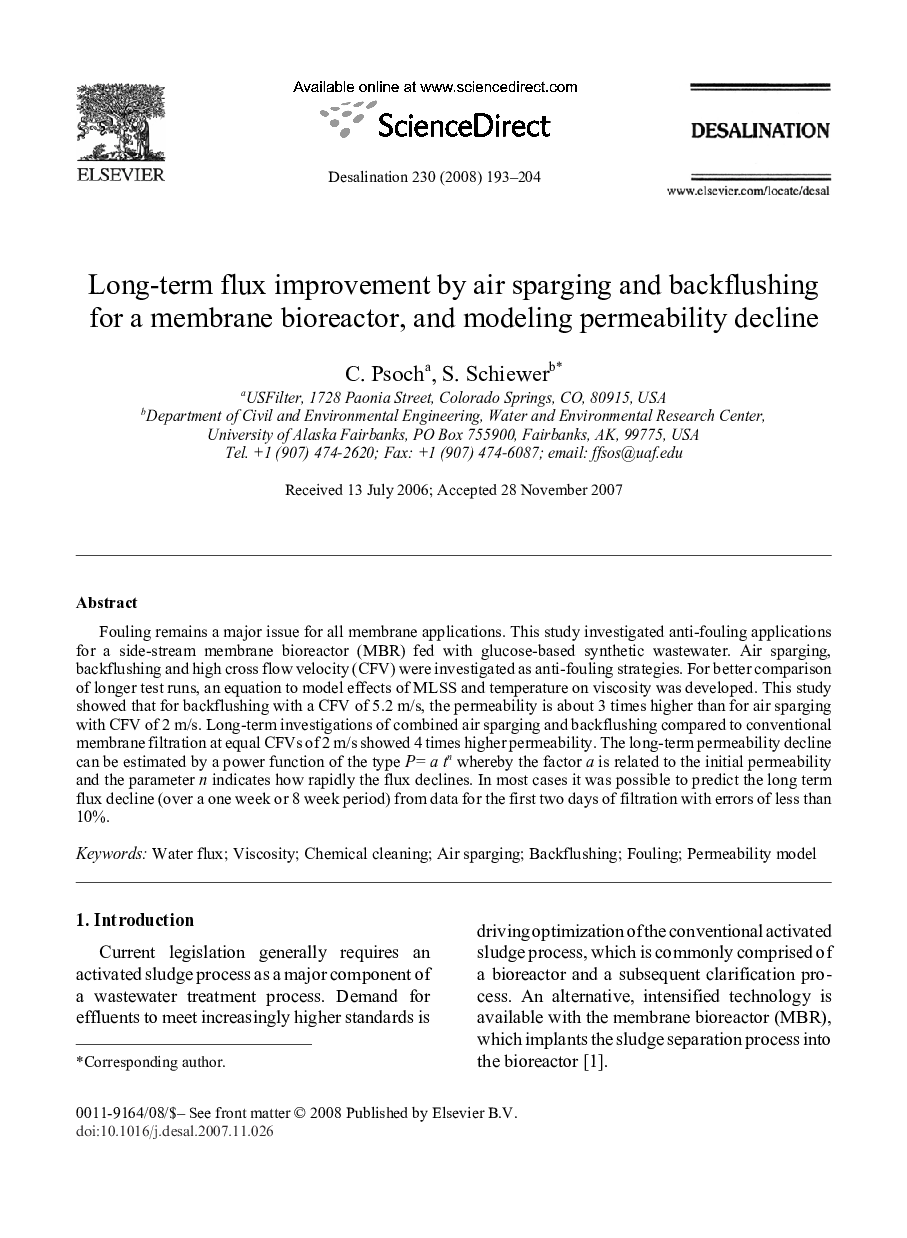| Article ID | Journal | Published Year | Pages | File Type |
|---|---|---|---|---|
| 627235 | Desalination | 2008 | 12 Pages |
Fouling remains a major issue for all membrane applications. This study investigated anti-fouling applications for a side-stream membrane bioreactor (MBR) fed with glucose-based synthetic wastewater. Air sparging, backflushing and high cross flow velocity (CFV) were investigated as anti-fouling strategies. For better comparison of longer test runs, an equation to model effects of MLSS and temperature on viscosity was developed. This study showed that for backflushing with a CFV of 5.2 m/s, the permeability is about 3 times higher than for air sparging with CFV of 2 m/s. Long-term investigations of combined air sparging and backflushing compared to conventional membrane filtration at equal CFVs of 2 m/s showed 4 times higher permeability. The long-term permeability decline can be estimated by a power function of the type P= a tn whereby the factor a is related to the initial permeability and the parameter n indicates how rapidly the flux declines. In most cases it was possible to predict the long term flux decline (over a one week or 8 week period) from data for the first two days of filtration with errors of less than 10%.
